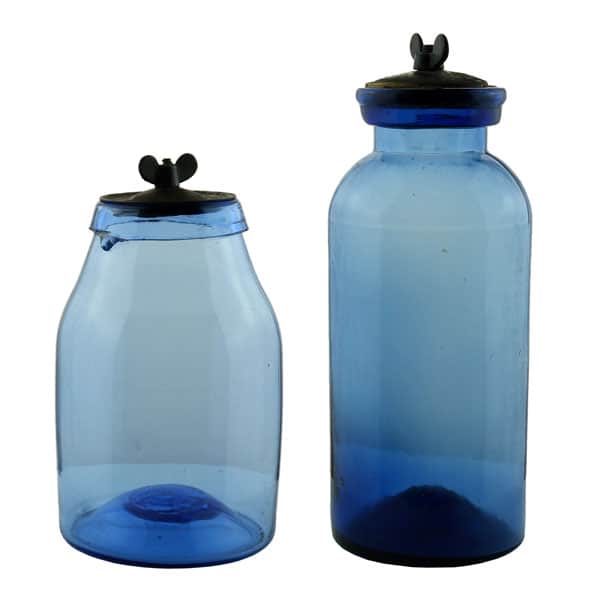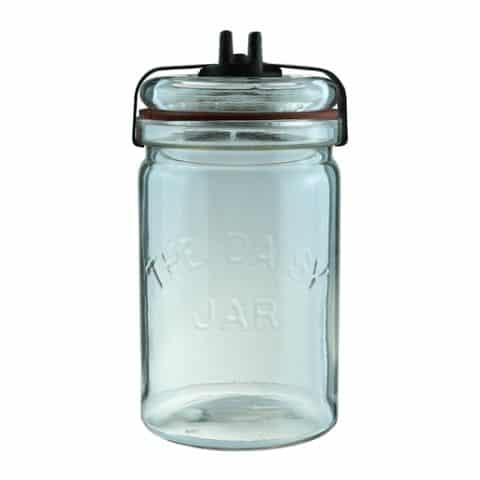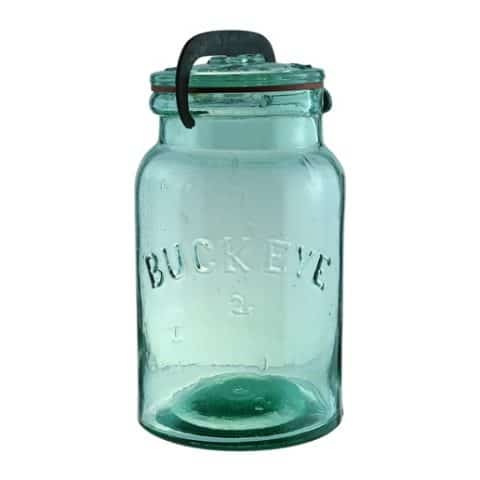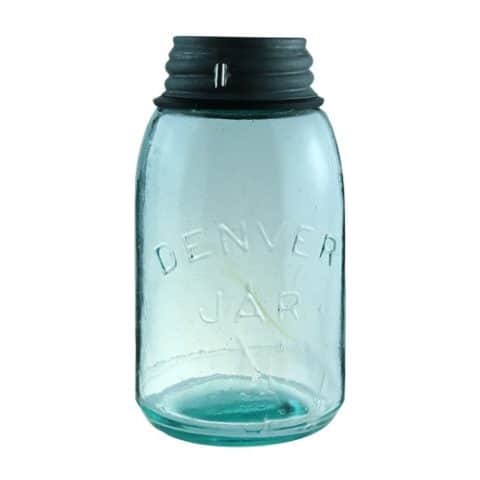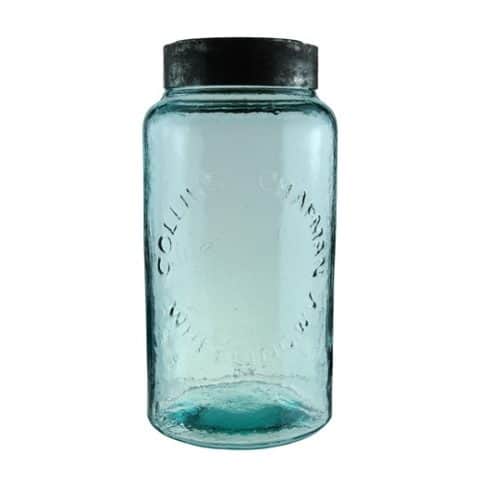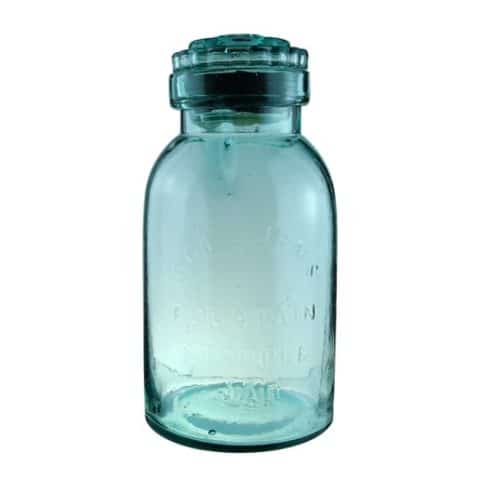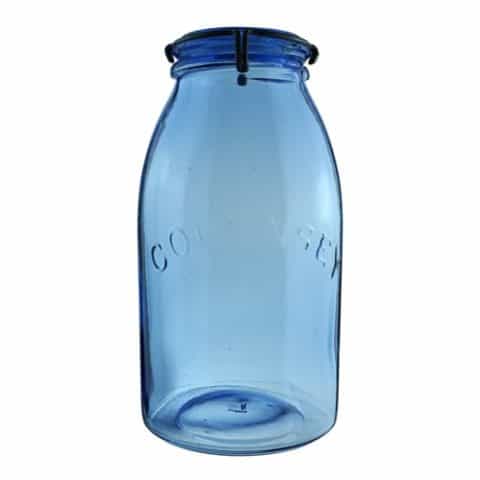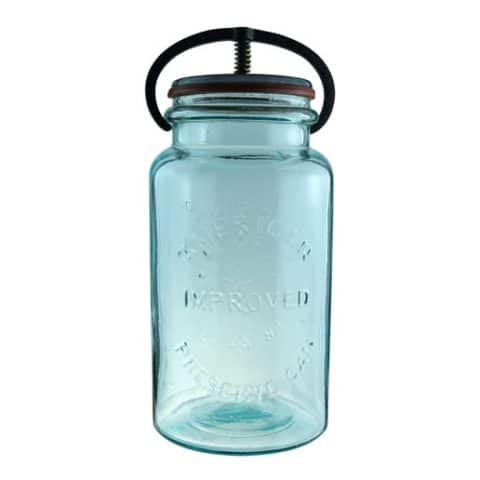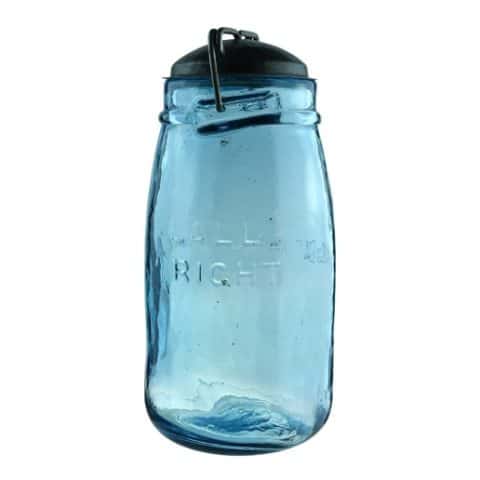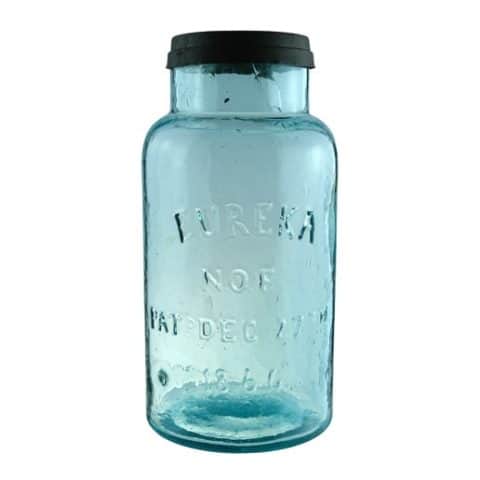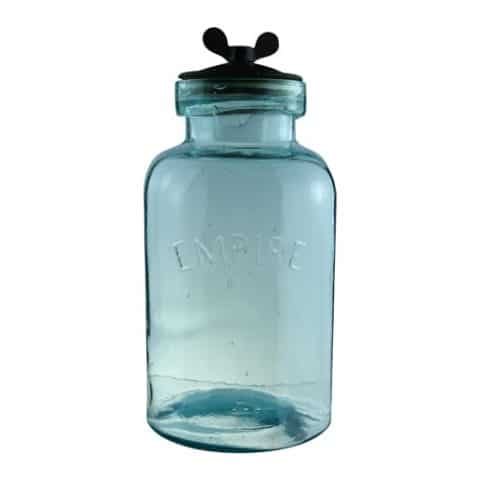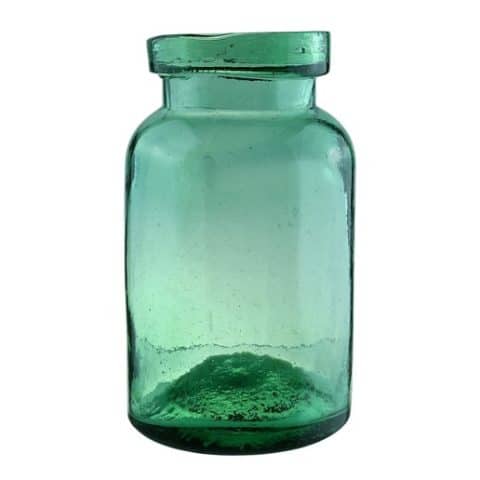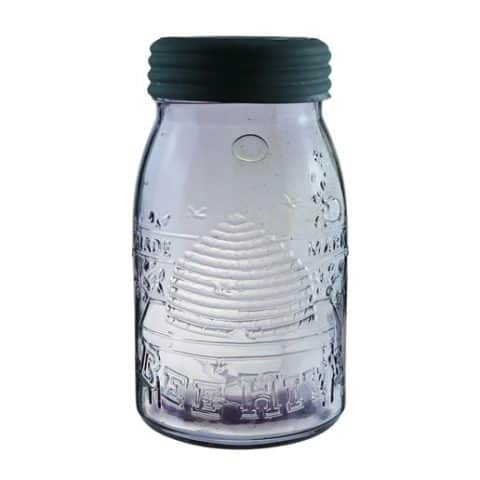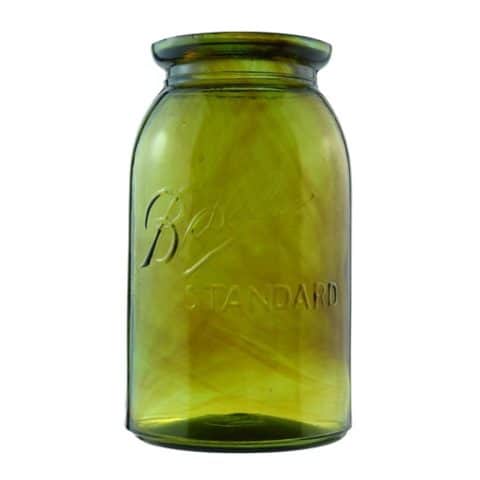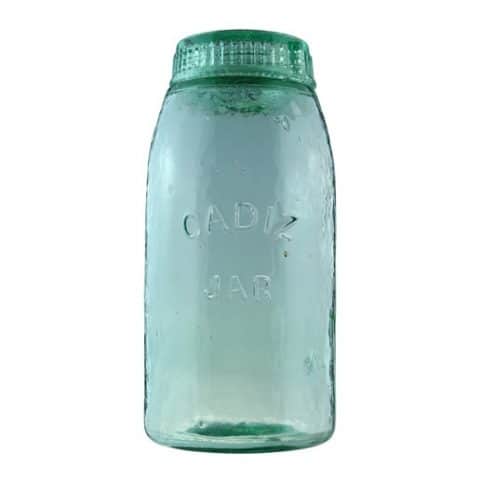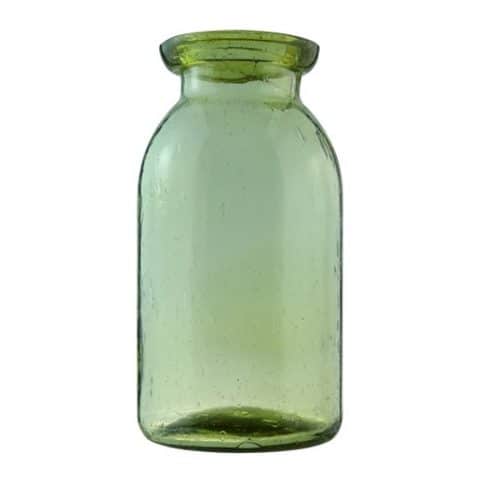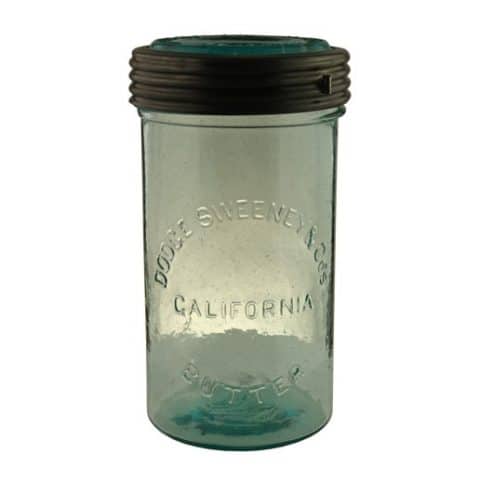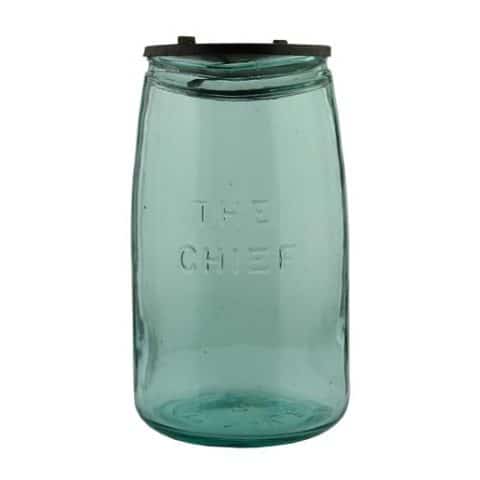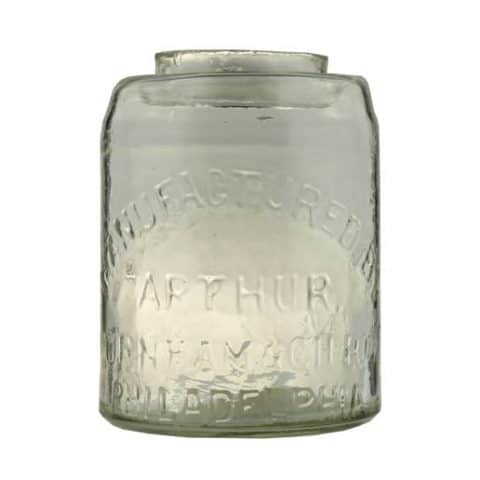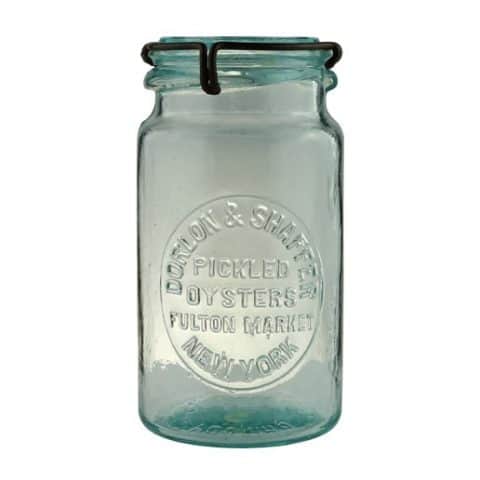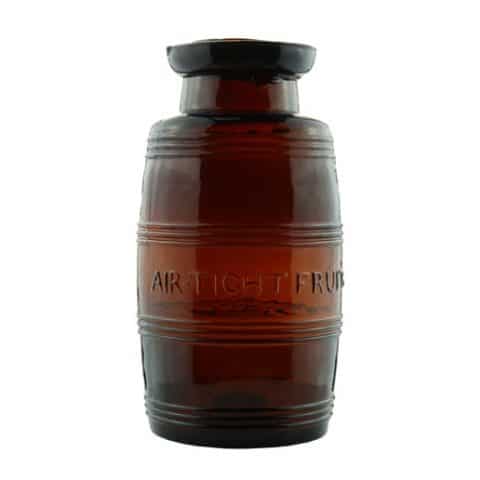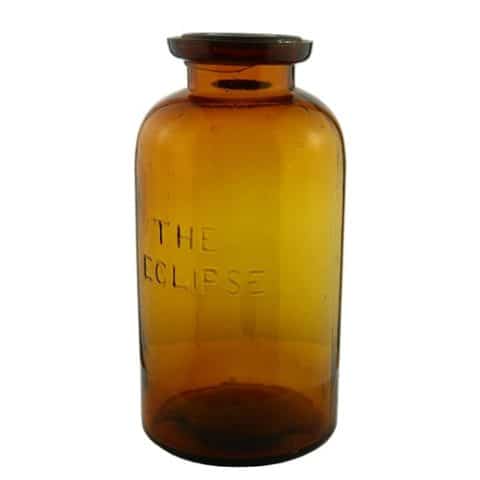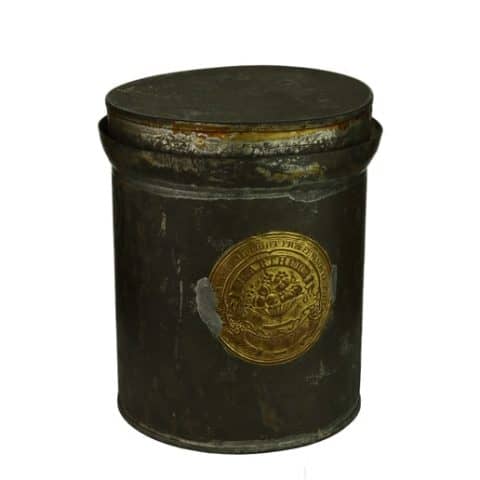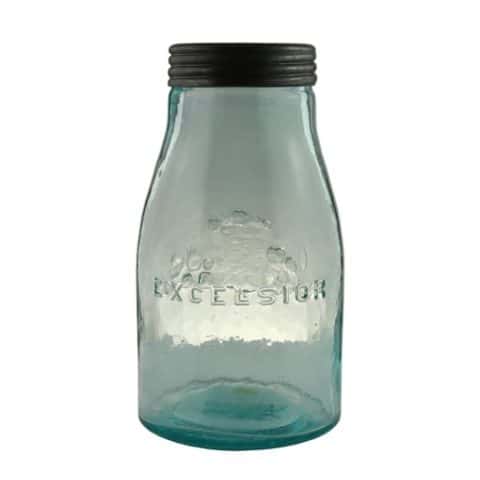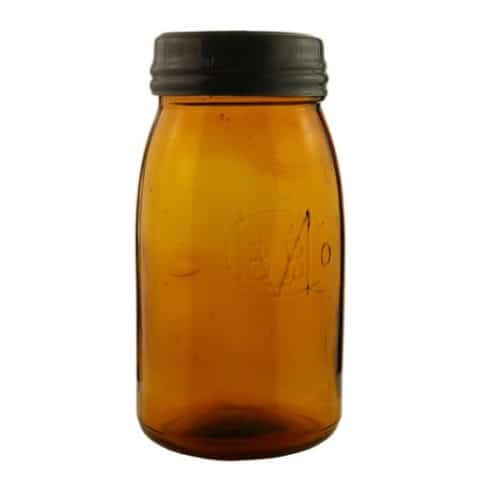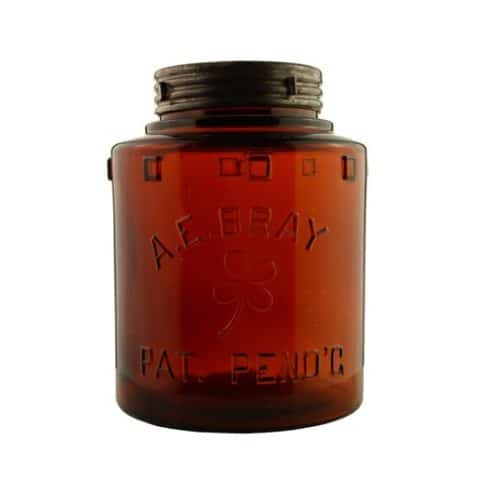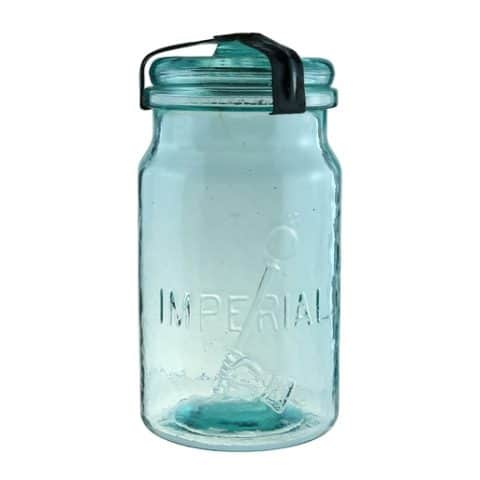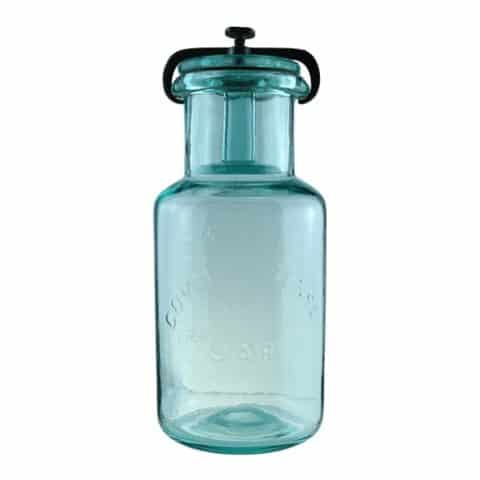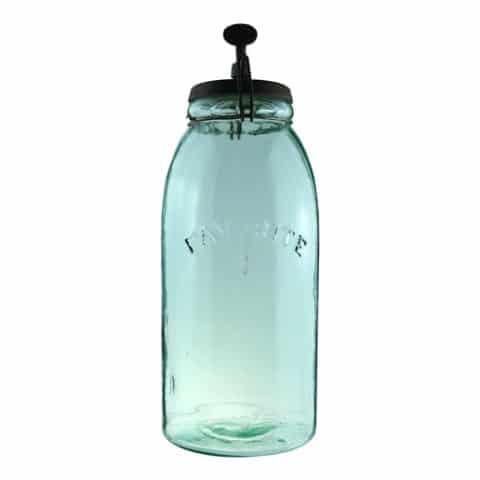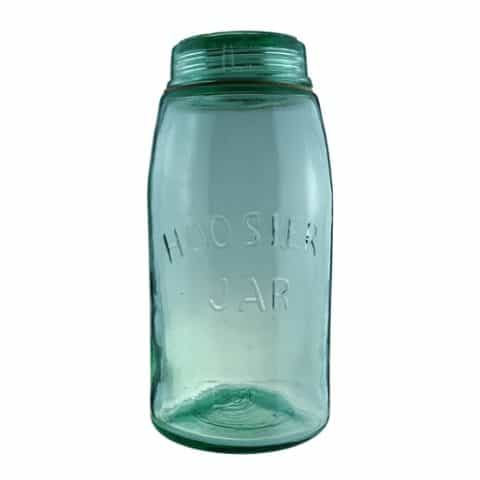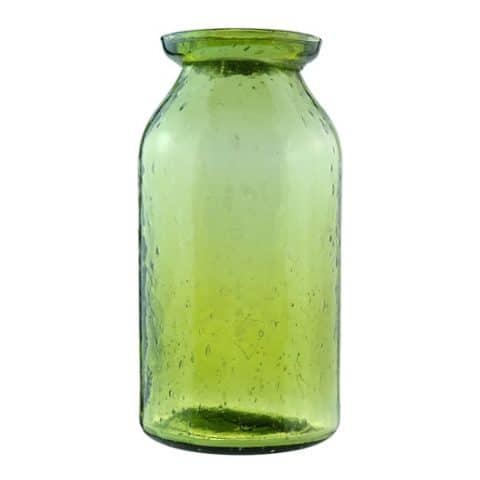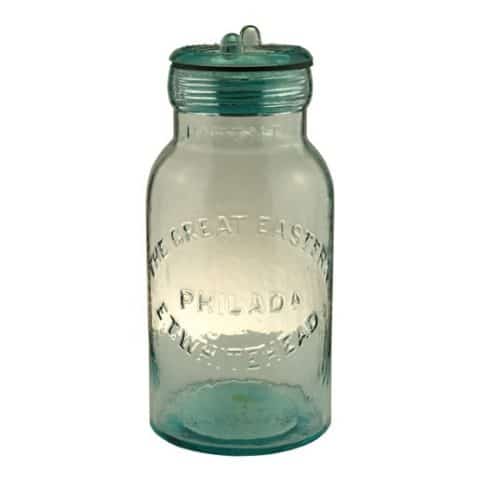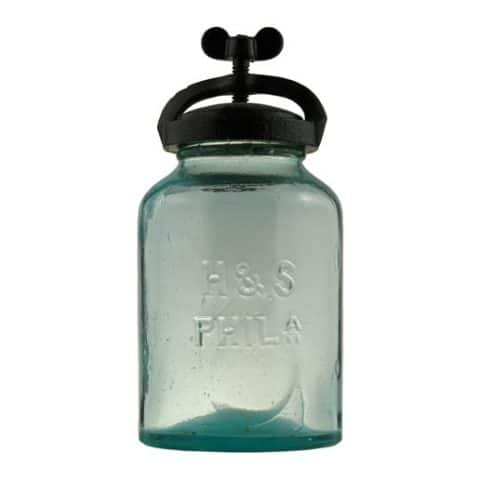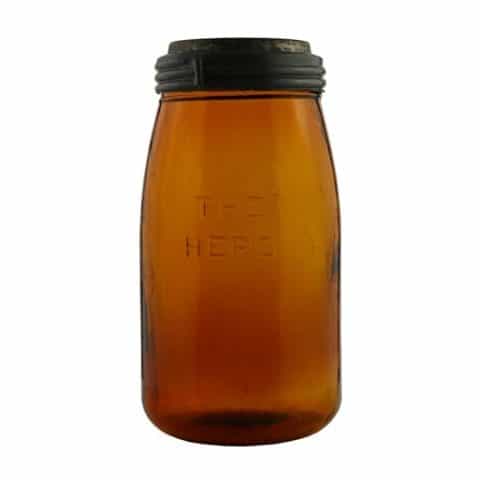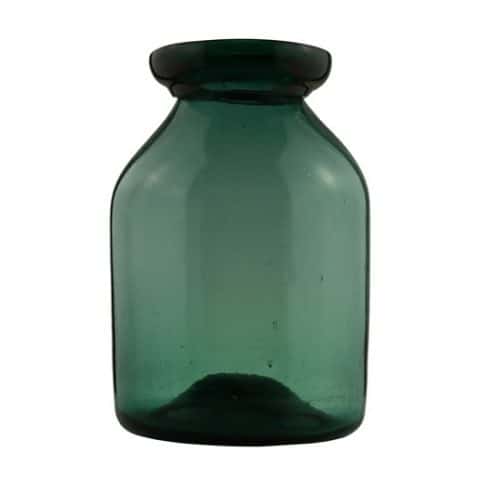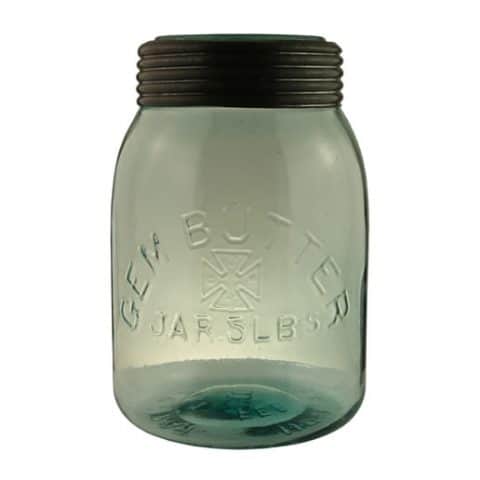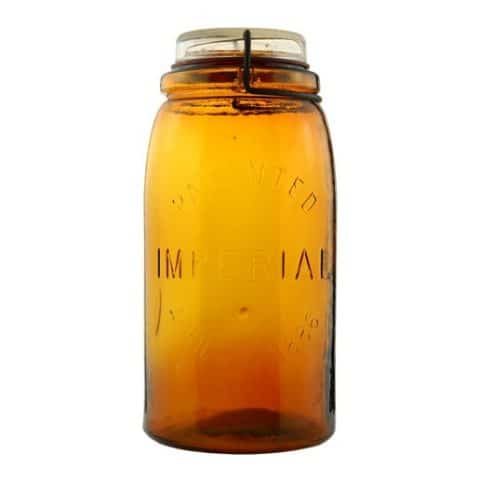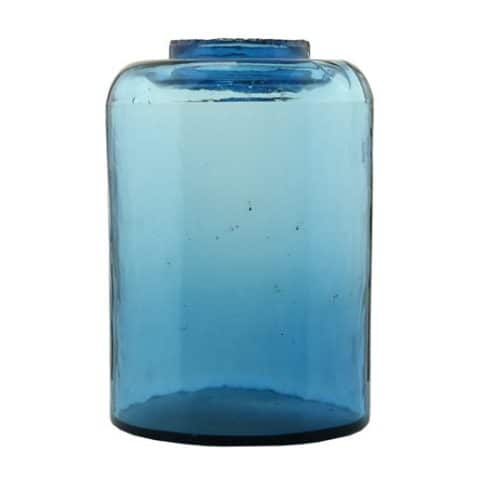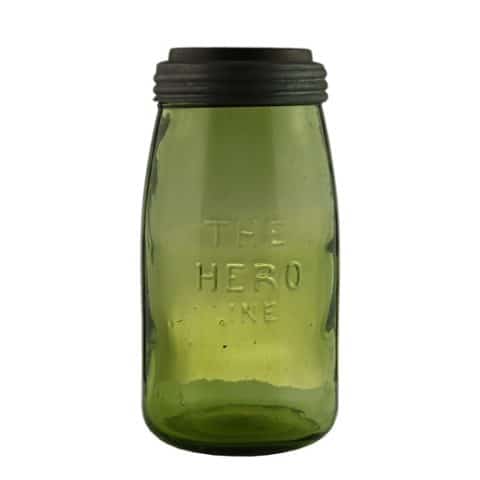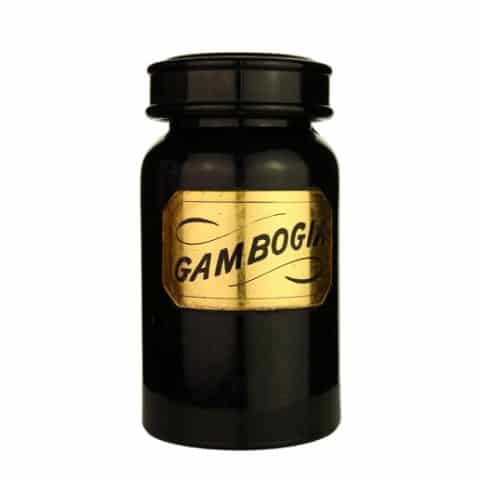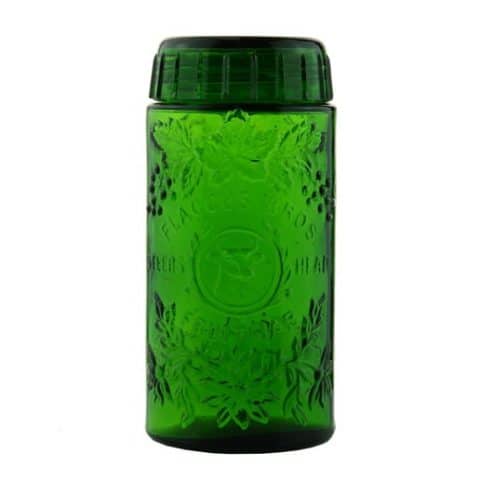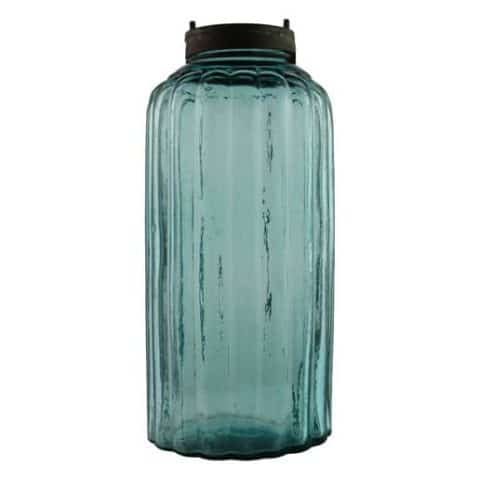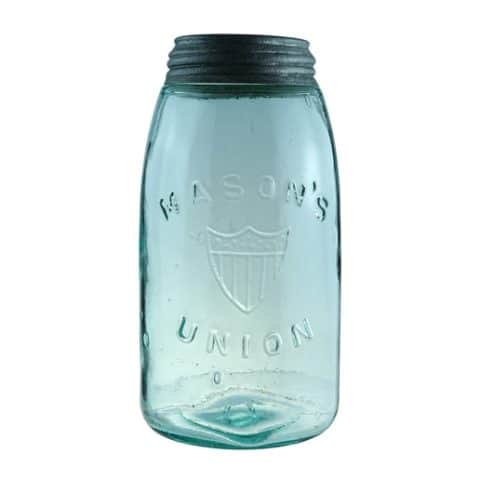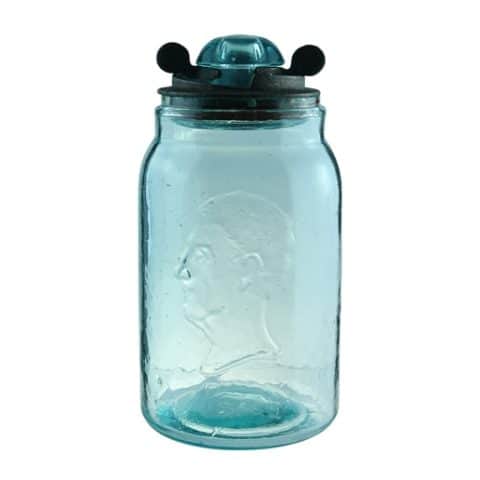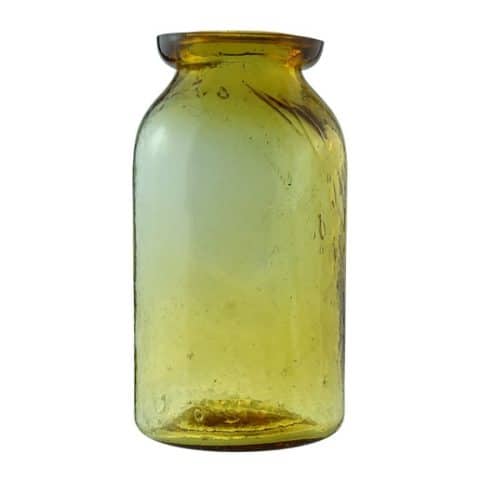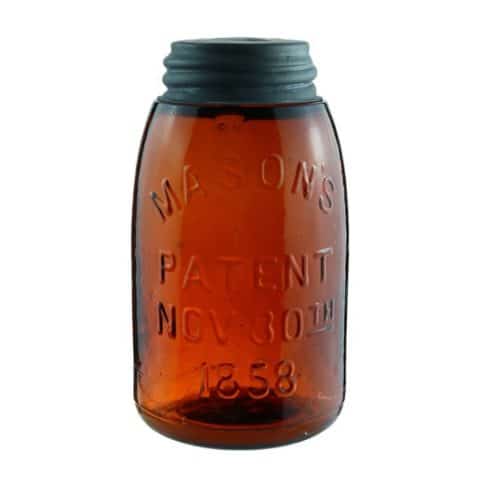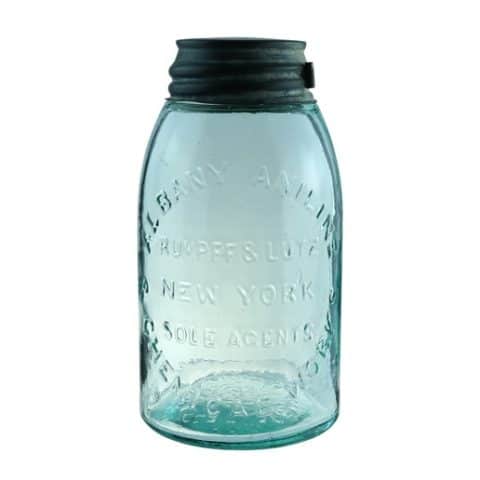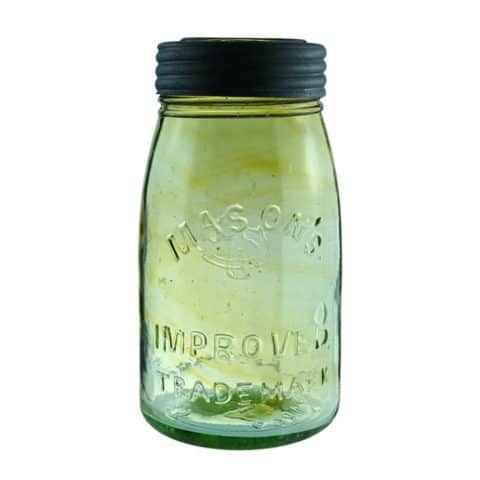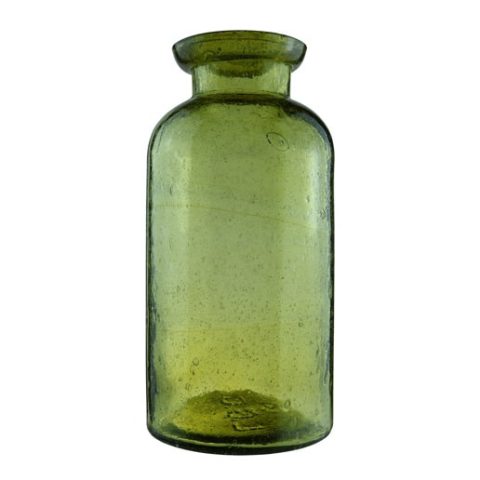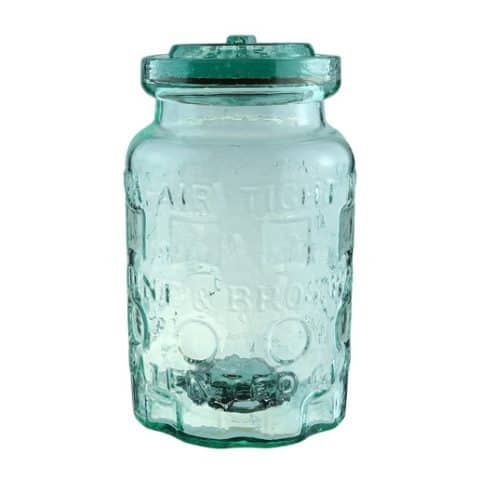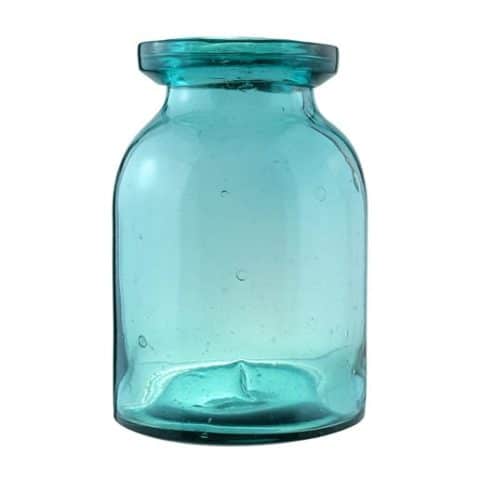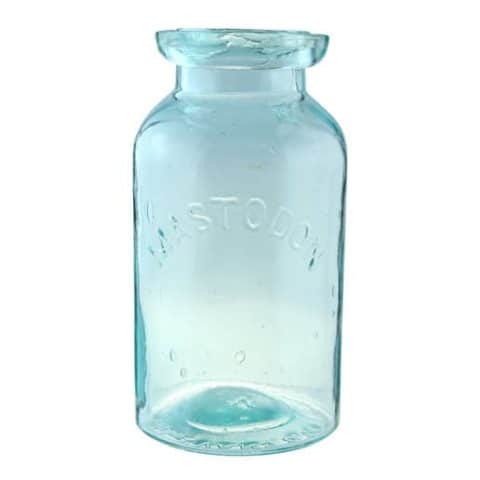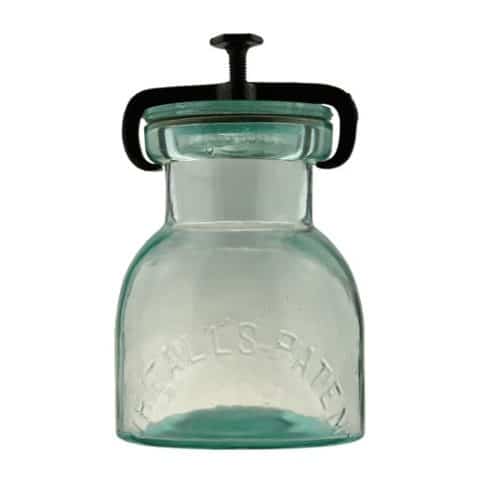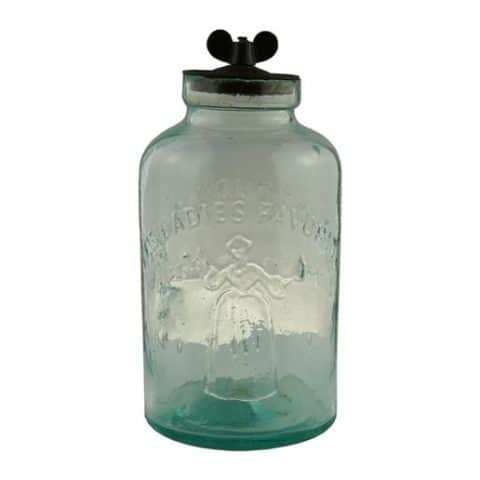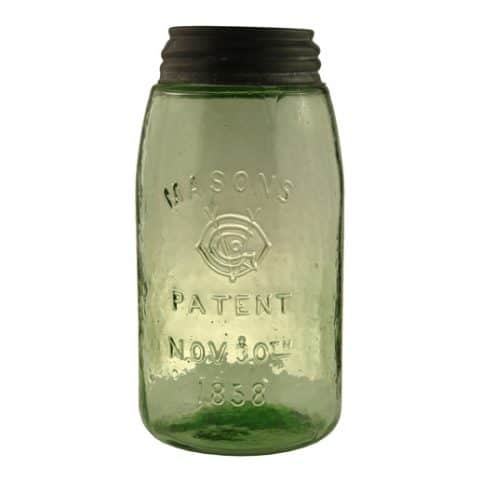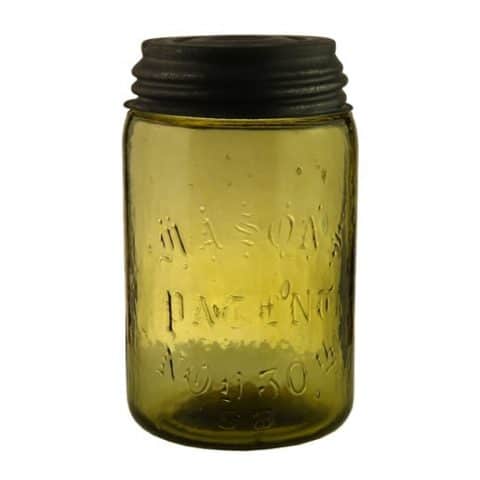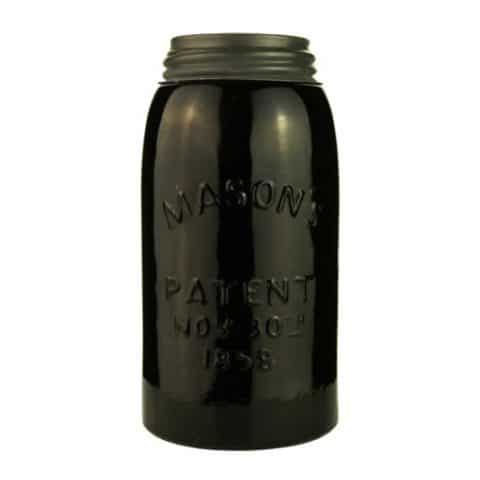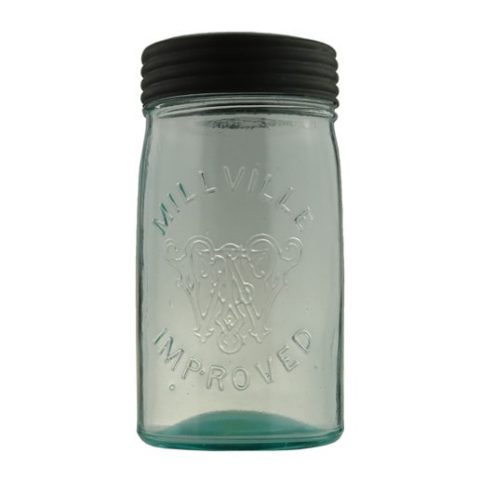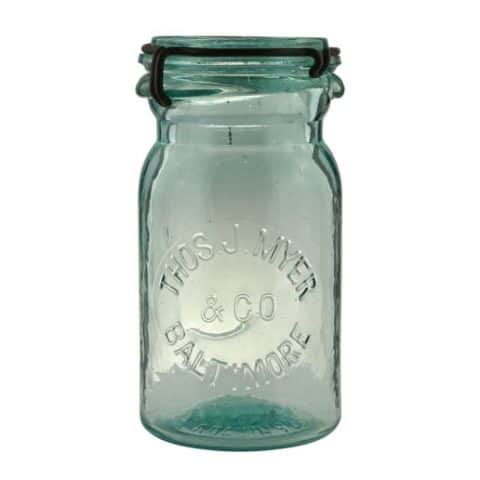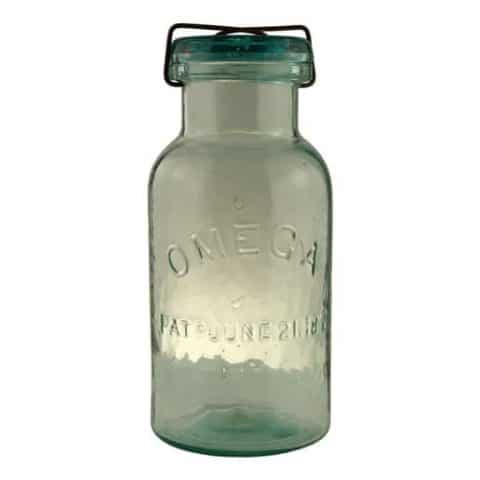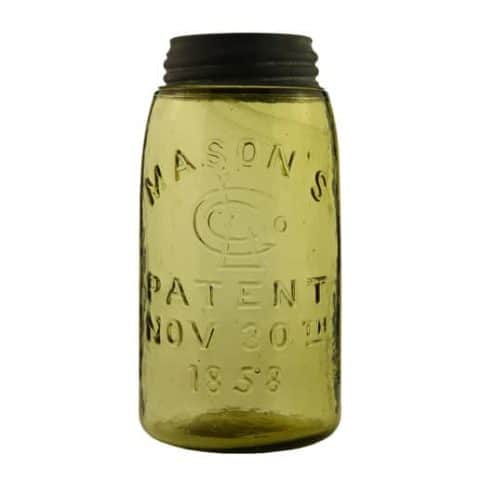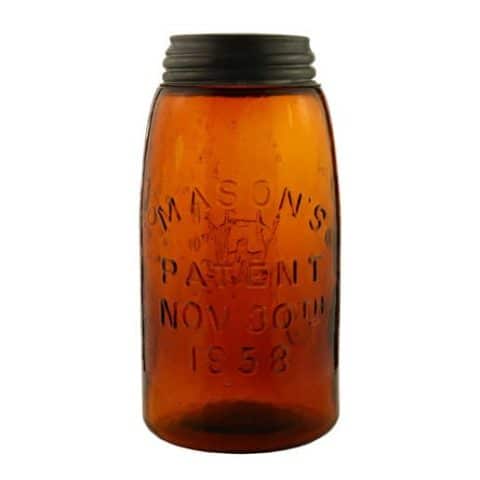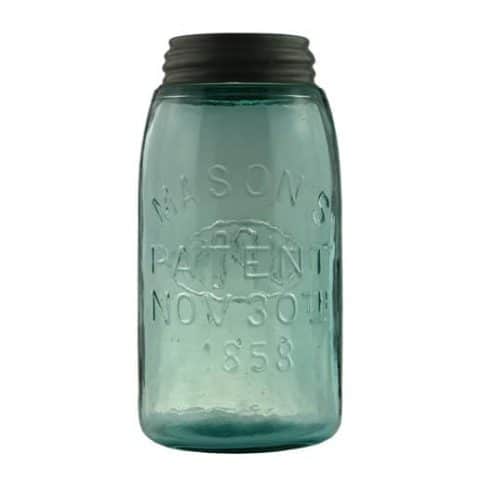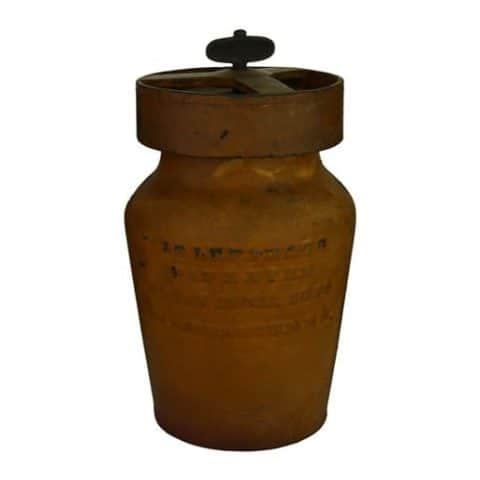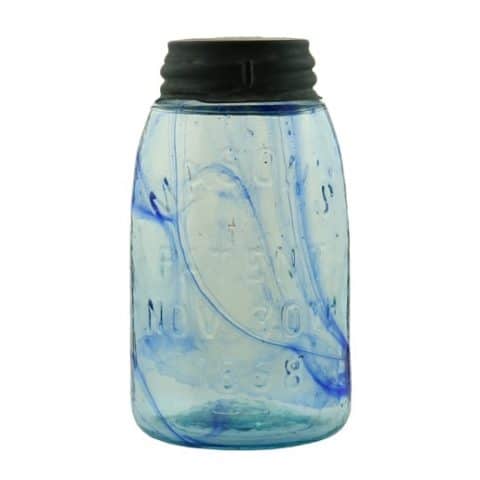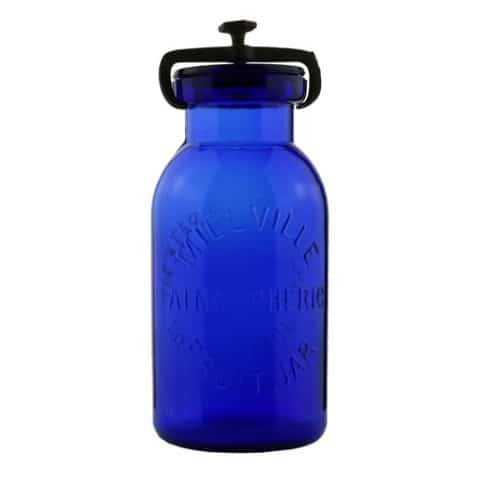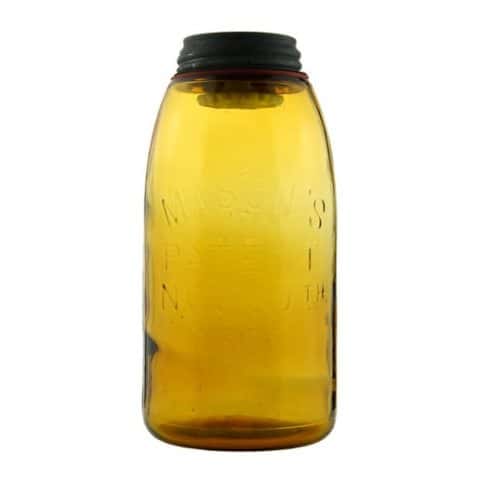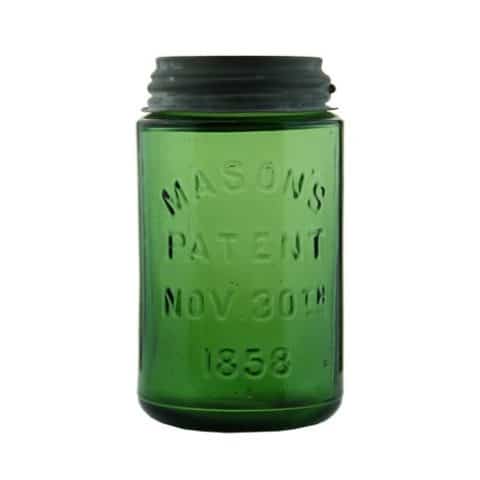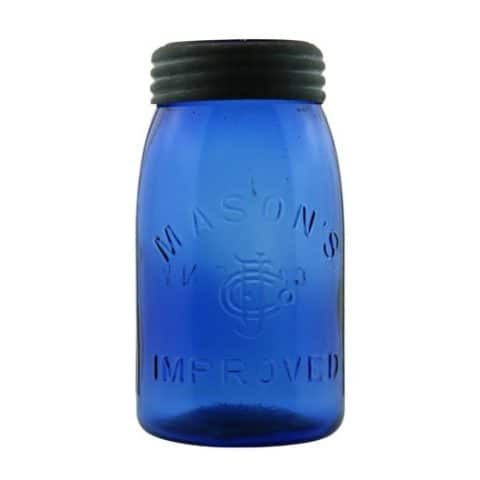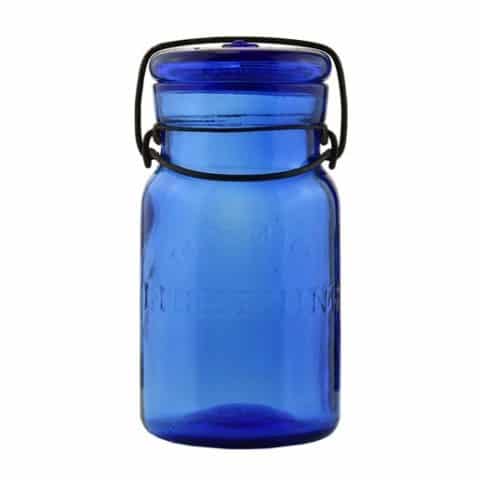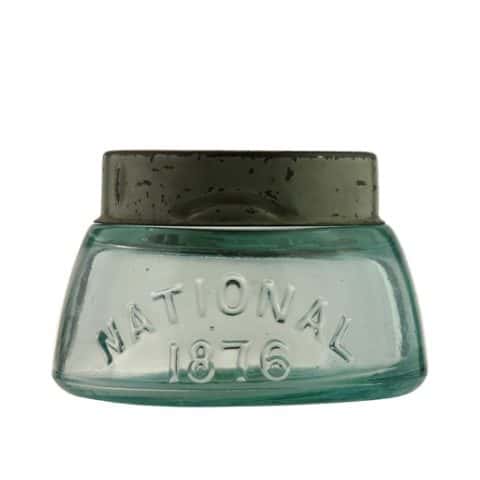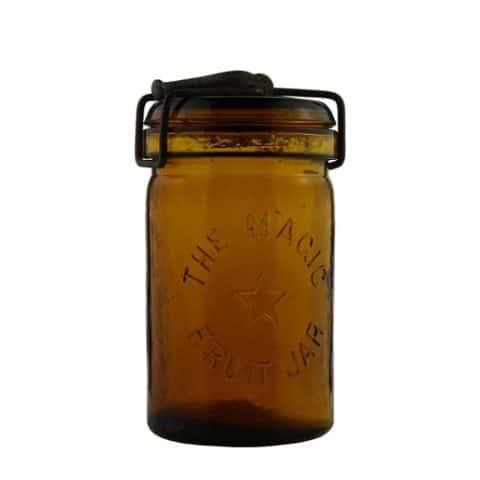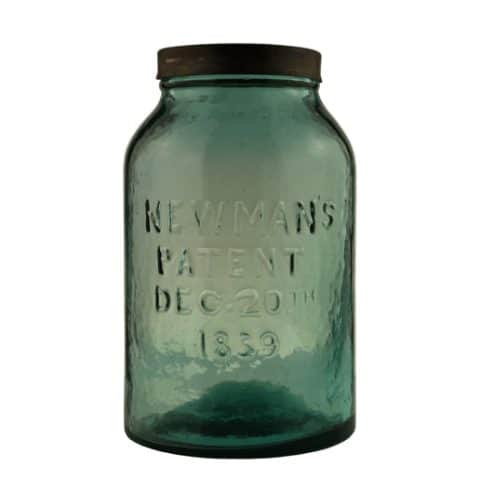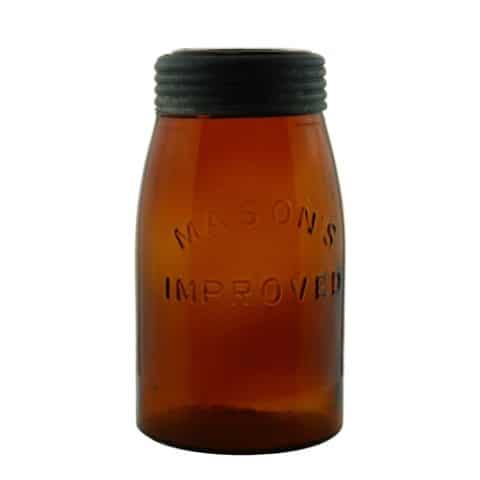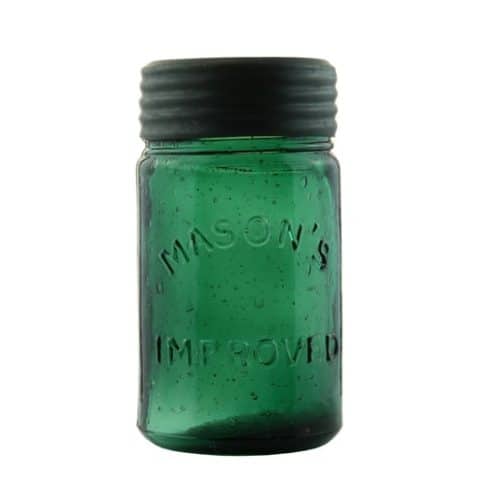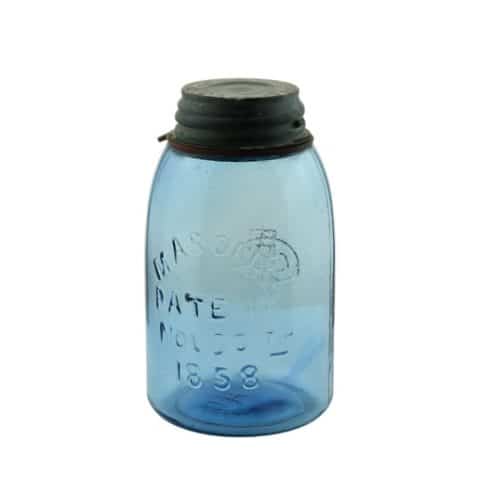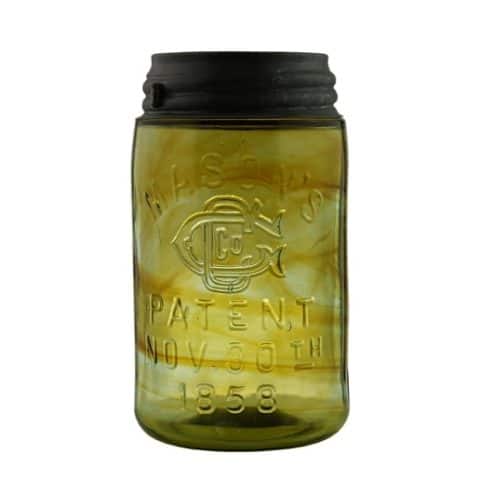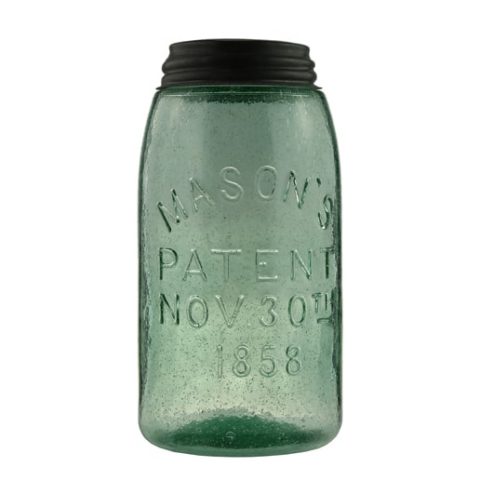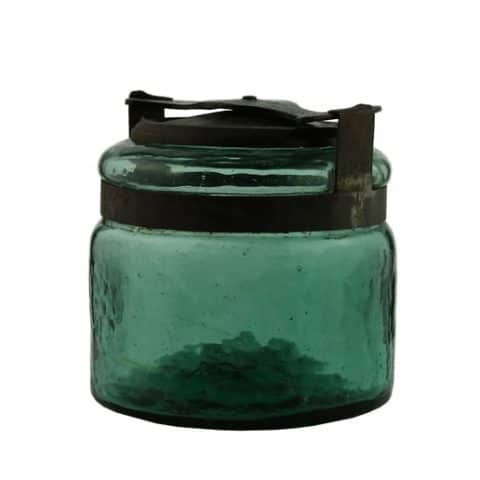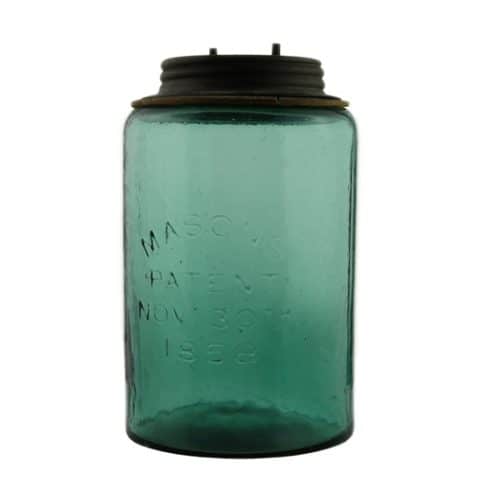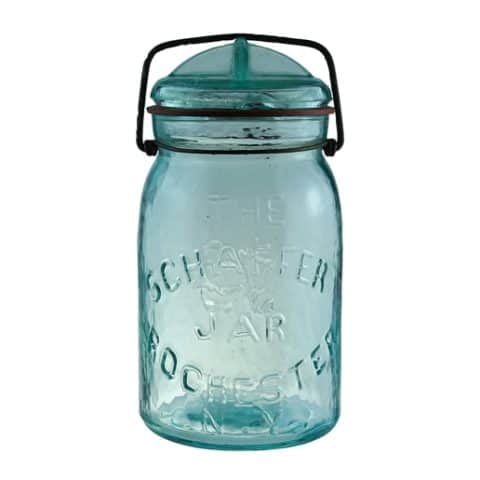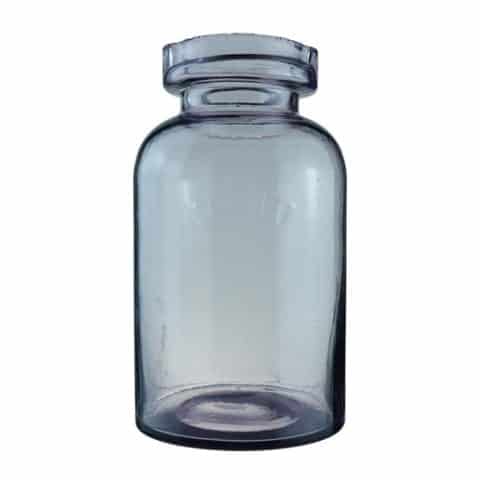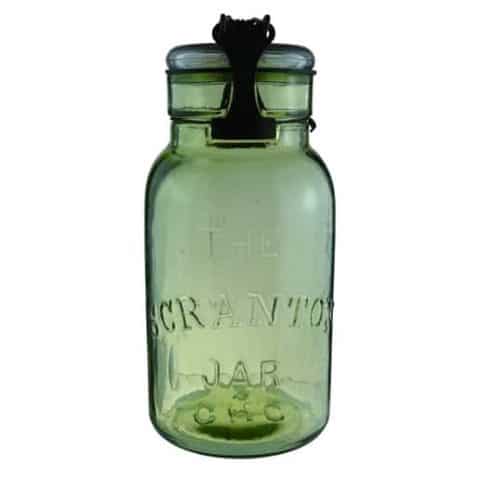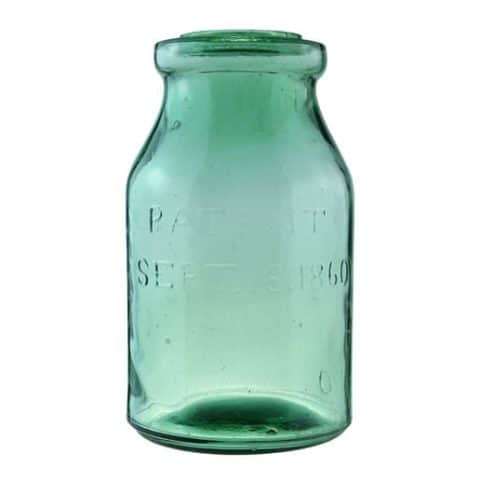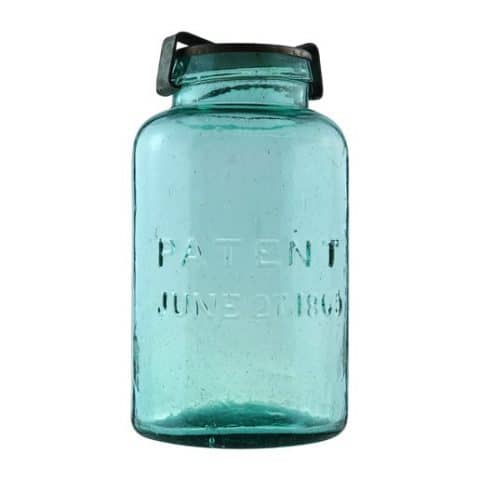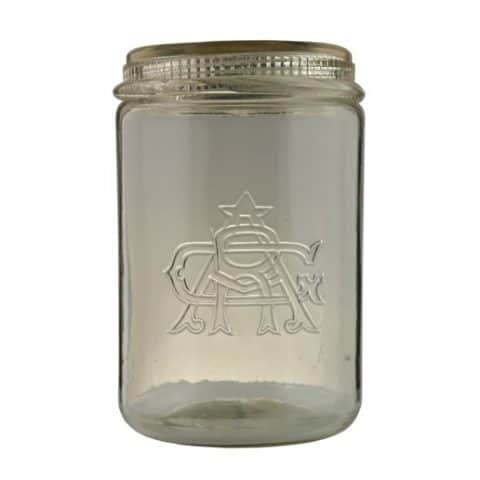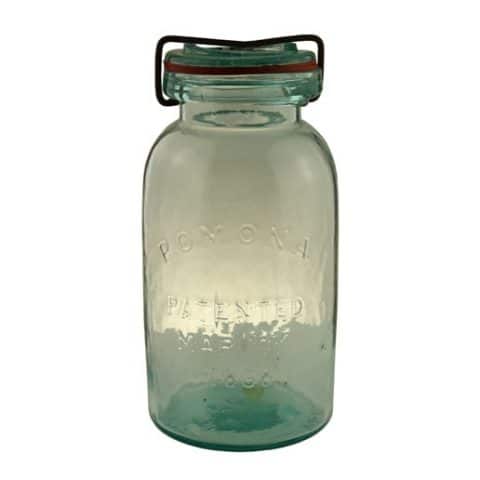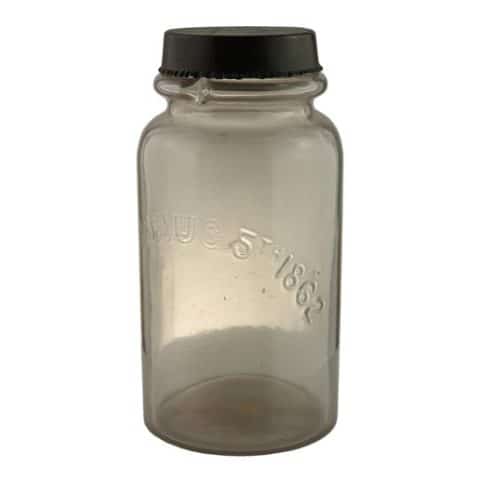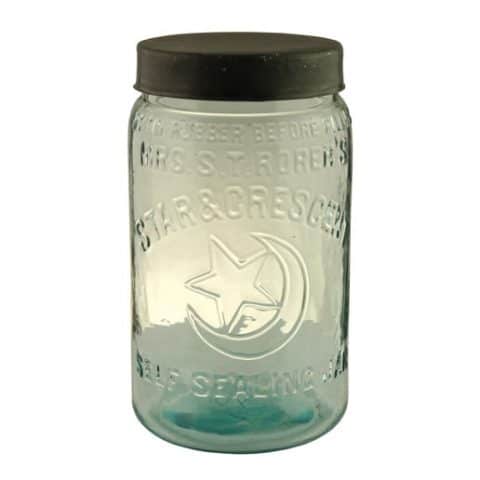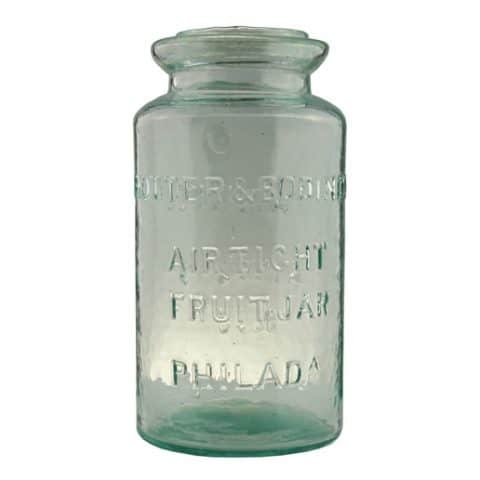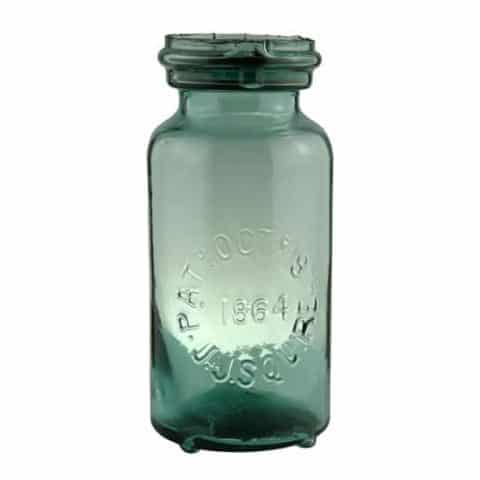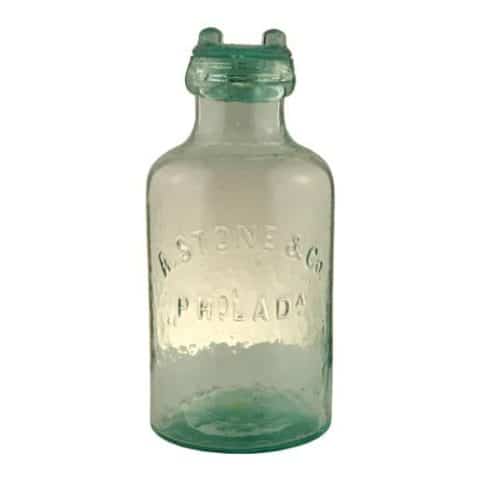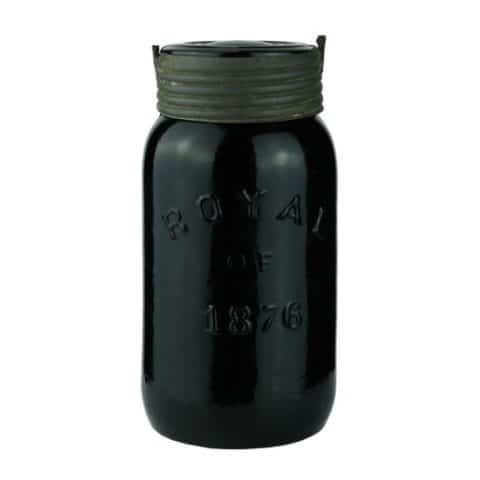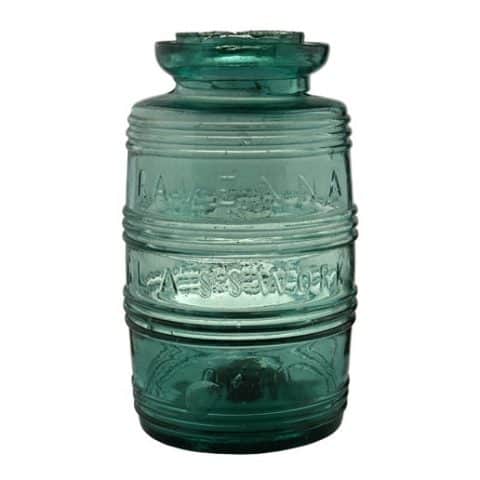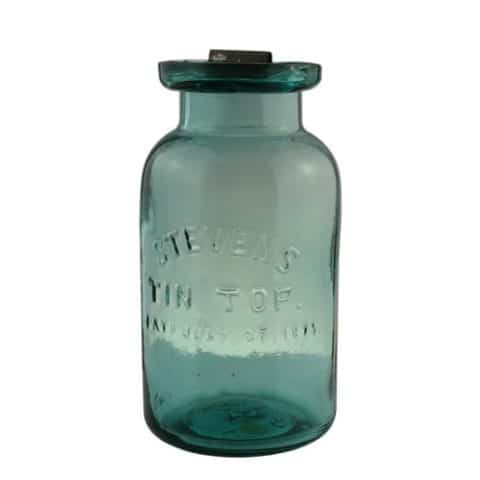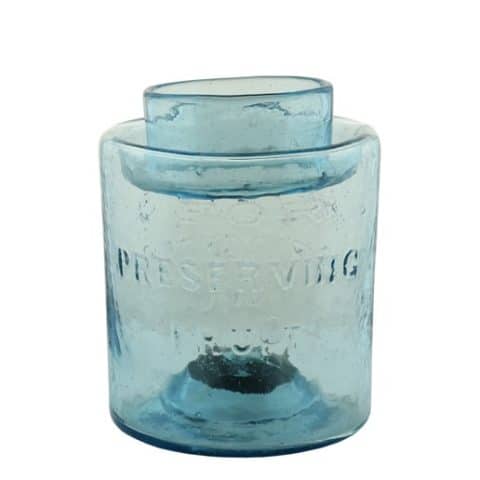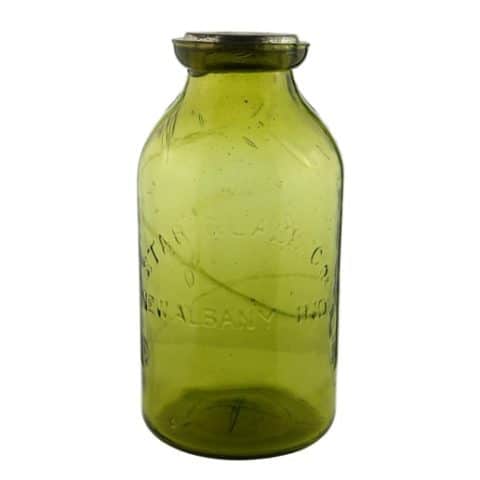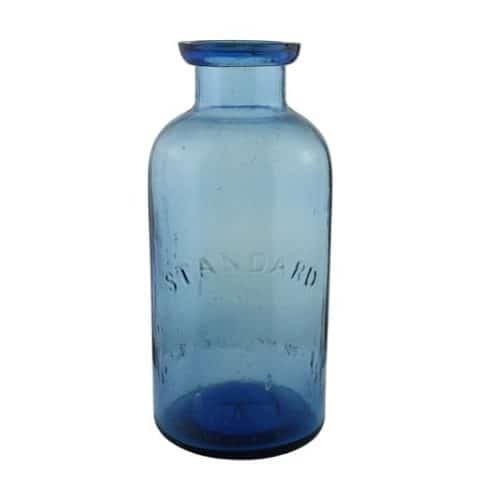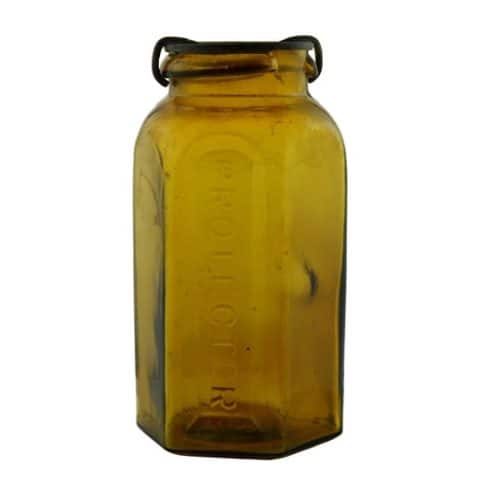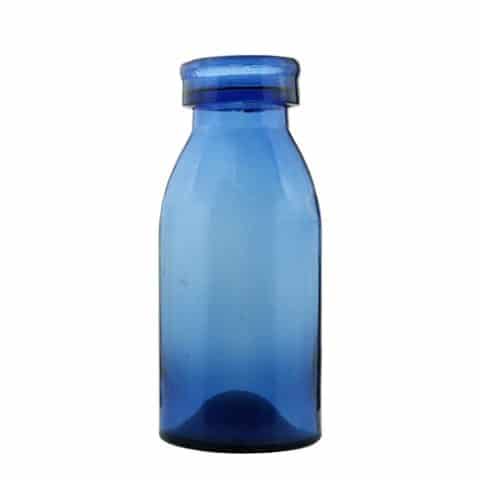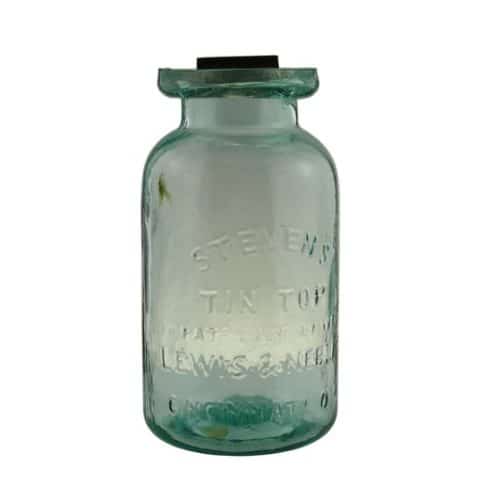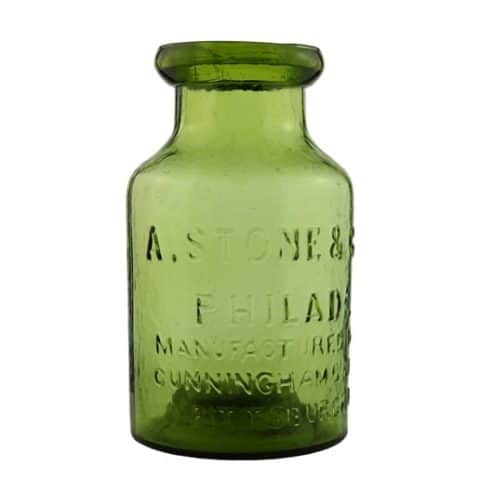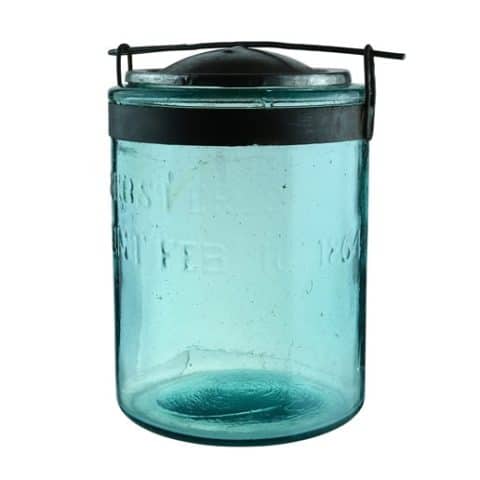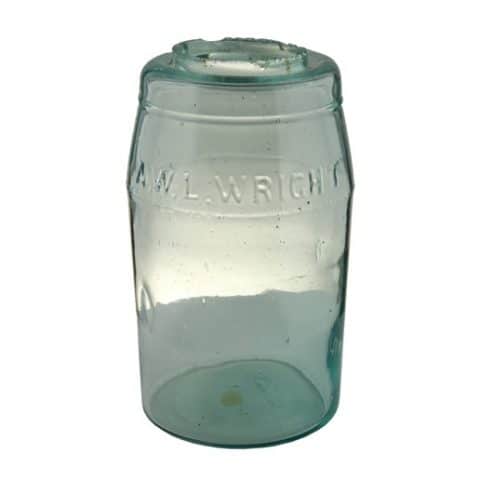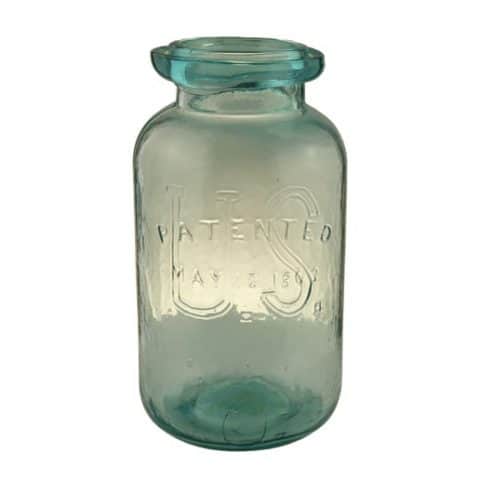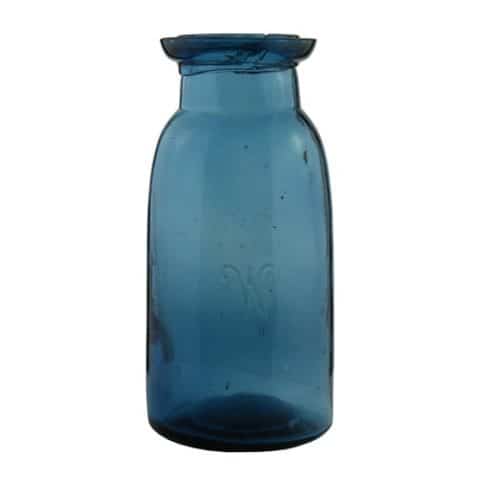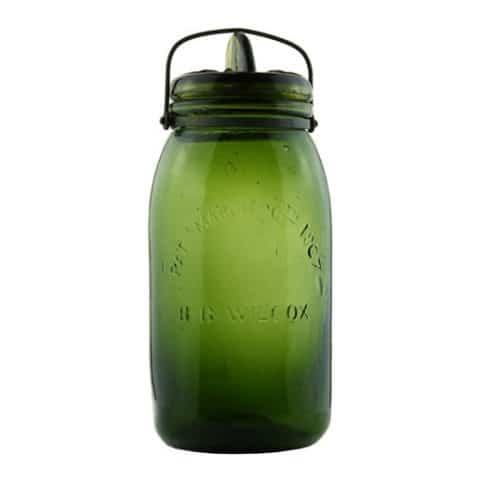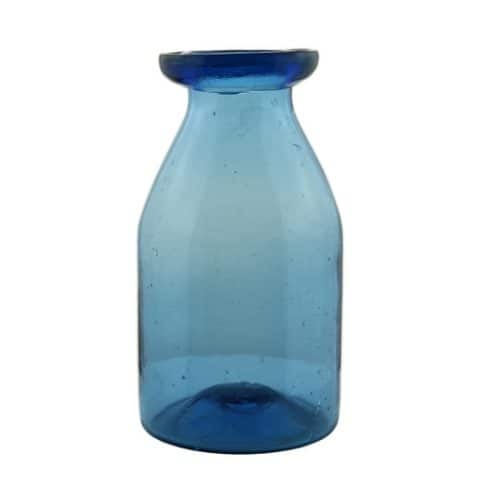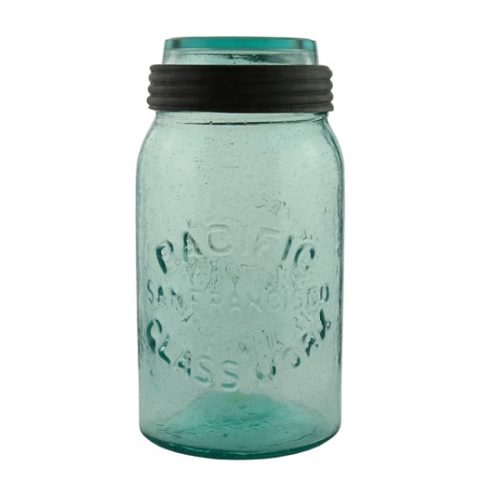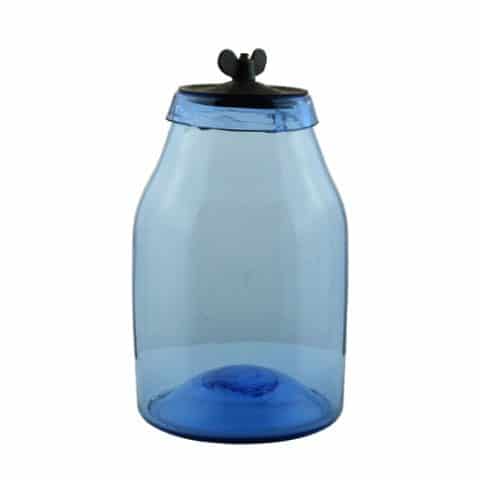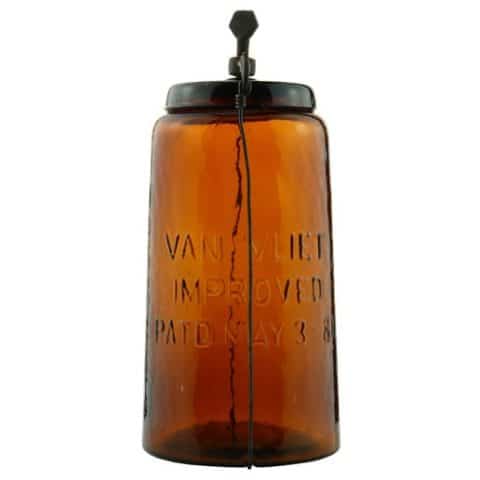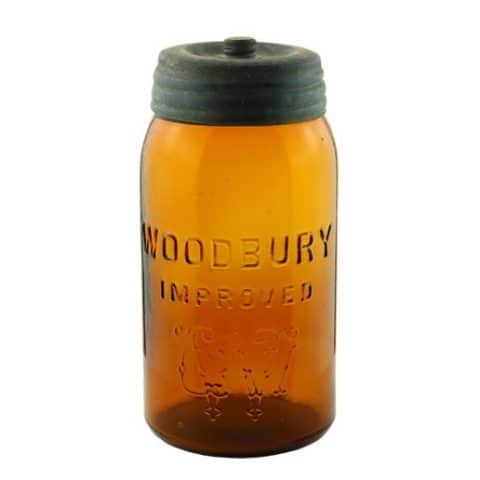J. D. Willoughby Jar
J. D. Willoughby Jar
Patd Jan 4 1859
James D. Willoughby, Carlisle, Pennsylvania
Sapphire Blue Quart
Provenance: Darrell Plank Collection

The museum presents an extremely rare, free-blown “J. D. Willoughby” quart jar in a beautiful sapphire blue glass. The jar can also be found in clear glass.
The glass is unembossed as far as a name or maker. The closure is a Willoughby metal stopple consisting of two metal disks and a gasket compressed by a wing nut that seals on the inside of the mouth of the jar.
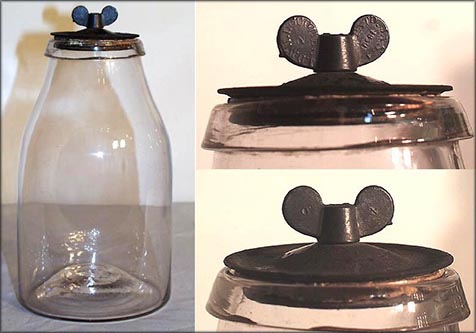
Embossed on one side of the cast wingnut is ‘J. D. WILLOUGHBY’ (left) and ‘PATD JAN 4 1859’ (right). On the other side of the nut is an embossed ‘O’ (left) and ‘N’ (right).
This bell-shaped jar is open pontiled and was made by the turn mold process, with the lip made by folding and forming the neck of the jar back on itself. Note that the lip of the staple is painted black. There is a high kick-up base.
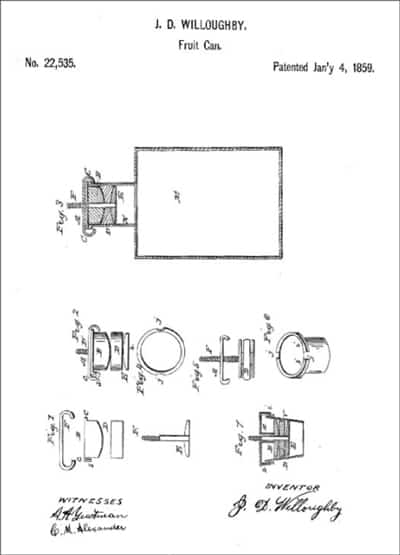
See an example in the Museum of an extremely rare J. D. Willoughby & Co. New York – The Ladies Favorite.
James D. Willoughby received Patent No. 22,535 for an “Improvement in Sealing Cans and Bottles” on January 4, 1859. Willoughby resided in Carlisle, Pennsylvania, and assigned the patent to C.M. Alexander of Washington, D.C. who was a patent attorney.
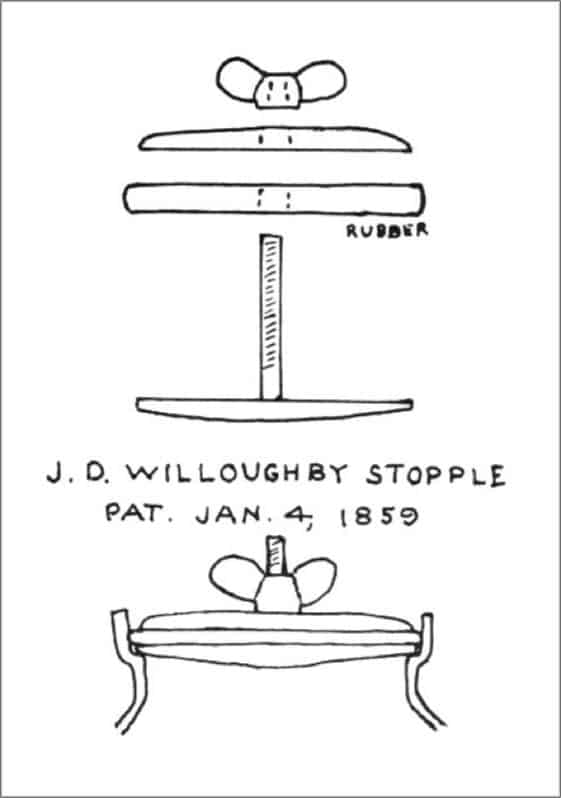
The device consisted of four pieces. The first was a metal bottom plate with an upright screw; the second, a rubber gasket or grommet that fit over the screw; the third, a metal top plate that also fit over the screw above the grommet; and fourth, a wingnut to tighten the assemblage. When screwed down, the two plates compressed the rubber grommet forcing it against the internal sides of the finish to create a seal.

The advertisement below, circa 1867, shows that A. R. Samuel was the Glass Manufacturer and Proprietor of the “Willoughby,” “Haller,” “Kline,” “Mason,” and “Franklin” Fruit Jars. He was located at the southeast corner of Howard & Oxford Streets in Philadelphia.
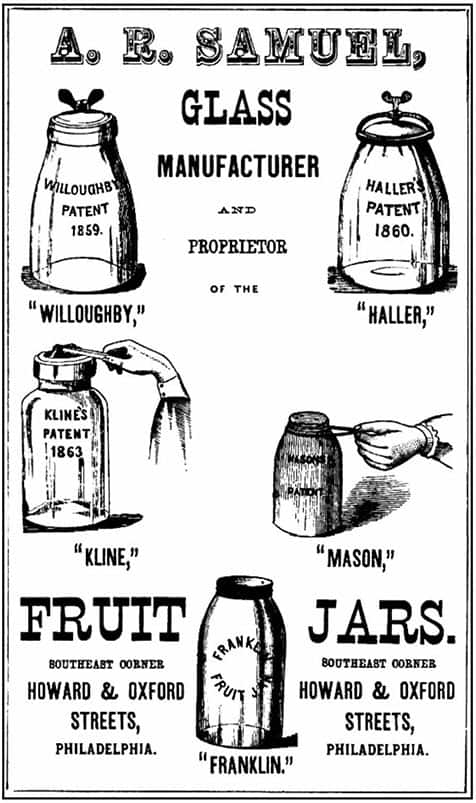
Support: Open Pontiled Willoughby Jar, Original stopper. This clear quart is free-blown, with an applied collar mouth and pushed-up base with an open pontil scar. It also includes the original 5-piece stopple assembly. The stopple consists of two iron plates, the threaded iron stud, cast pewter wingnut, and even the original seal ring, though of course it is now dried out. The cast nut is embossed “J.D. WILLOUGHBY PAT’D JAN 4 1859” on one side, and on the other with an “N” and an “O”. It is incredible that they were able to cram this much lettering on the small wing nut! The iron plates are also in nice clean shape with traces of original black paint and very little rust. The jar is brilliant and perfect. I believe this Willoughby is the only free-blown fruit jar with a patented closure. The appealing shape along with the originality of this particular example makes for a very fine specimen. – Greg Spurgeon, North American Glass
Primary Image: J. D. Willoughby jars imaged on location by Alan DeMaison, FOHBC Virtual Museum Midwest Studio
Support: Reference to Fruit Jar Annual 2020 – The Guide to Collecting Fruit Jars by Jerome J. McCann
Support: Reference to Red Book #11, the Collector’s Guide to Old Fruit Jars by Douglas M. Leybourne, Jr.
Support: Reference to A.R. Samuel, the Philadelphia Jar Maker by Bill Lockhart, Jim Sears, and Beau Schriever.
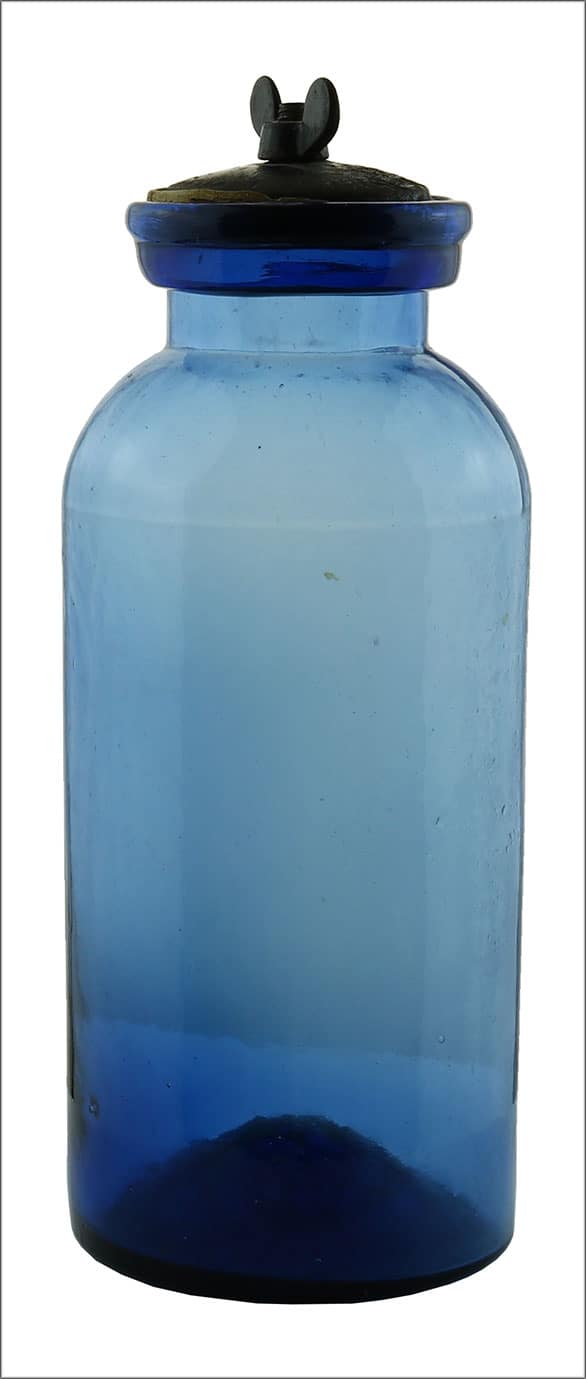
Support Image: Medium cobalt blue possible J. D. Willoughby with an iron pontil and rolled lip. See the museum rotating image. There are similar aqua ones and the general guess is that these all date back to 1850-1860 but it’s all just guesses. It didn’t come with the Willoughby but one fits very nicely so it’s as good a guess as any though I guess it’s possible that it was meant to be sealed with a cork and the fit for the Willoughby is just coincidental. – Darrell Plank
Support Image: “THE LADIES FAVORITE” / (woman in full dress holding a jar) – “WM. L. HALLER / CARLISLE / PA.”, (SFJR #511), Pennsylvania, ca. 1860 – 1870, bluish aqua quart, smooth base, applied mouth, original ‘J.D. Willoughby Patented January 4, 1859’ two-piece iron disk closure and wing nut – Jim Hagenbuch, Glass Works Auctions, Auction #96
Join the FOHBC: The Virtual Museum is a project of the Federation of Historical Bottle Collectors (FOHBC). To become a member.
Join the FOHBC: The Virtual Museum is a project of the Federation of Historical Bottle Collectors (FOHBC). To become a member.

